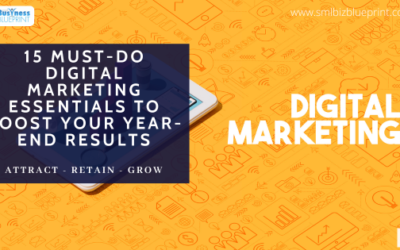In today’s highly competitive market, perception in marketing is more than a buzzword—it’s the cornerstone of your business.
How your potential customers perceive your product or service can be the deciding factor in whether or not they choose you over a competitor.

The Importance of Perception in Marketing
Defining Perception in Marketing
Perception in marketing is about the value your customers associate with your product or service.
It’s not just about the product’s functionality but about the emotional resonance and status symbol it carries. Brands like Apple have mastered the art of creating a perception of innovation and status around their products.
Tip 1: Use storytelling to imbue your product with value beyond its features.
Tip 2: Incorporate social proof, like customer testimonials, to build positive perception.
Tip 3: Use sensory language in your marketing to help customers imagine the experience of using your product.
Psychological Aspects
Understanding the psychology behind perception can equip you with the tools to market your brand effectively.
For instance, colours elicit specific emotions; red invokes urgency, while blue creates a sense of trust. Incorporating such psychological insights can be a game-changer for your marketing strategies.
Tip 1: Conduct A/B testing to understand which colour schemes resonate with your audience.
Tip 2: Use music that aligns with your brand’s values in any video content.
Tip 3: Develop emotionally driven ad campaigns that touch these psychological aspects.
Consumer Decision-making
People don’t buy products; they buy the perception of what those products will do for them.
For instance, someone doesn’t buy a luxury car just for transportation; they buy it for the perception of success and status it offers.
Tip 1: Leverage scarcity and exclusivity to make your products more desirable.
Tip 2: Use marketing campaigns that address the customer’s problem and present your product as the solution.
Tip 3: Create a loyalty program that rewards repeat purchases, reinforcing positive perceptions.
Branding and Image
Your brand image is people’s mental snapshot when they hear your business name.
The colours, logo, customer service, and even the music in your store all contribute to this image.
Tip 1: Keep branding consistent across all platforms.
Tip 2: Perform regular brand audits to assess public perception.
Tip 3: Use customer feedback to refine your brand image continually.

Why It Matters More for Small Businesses
Niche Markets
One advantage small businesses have is the ability to focus on niche markets. Large corporations often try to be everything to everyone, but you can specialise and create a tailored perception for a specific audience.
Tip 1: Identify a target niche that aligns with your business’s strengths and focus your marketing on it.
Tip 2: Create specialised products or services for this niche.
Tip 3: Speak directly to this niche in your marketing materials, emphasising your specialised knowledge and expertise.
Limited Resources
Small businesses often have to do more with less. While you may not have the advertising budget of a multinational, perception allows you to compete in other dimensions like trust and local relevance.
Tip 1: Leverage community events to build a local presence.
Tip 2: Partner with complementary businesses to share marketing costs.
Tip 3: Use inbound marketing tactics like blogs and social media to build perception at low costs.
Local vs. Global
While you might not be able to compete on scale, you can win on intimacy and relevance. Carve out a strong local identity that appeals to the community you serve.
Tip 1: Create localised marketing campaigns.
Tip 2: Offer special deals for residents.
Tip 3: Use local landmarks or culture in your marketing materials.
Word-of-Mouth and Referrals
For small businesses, referrals are the lifeline. One person’s positive experience can translate into a whole network of new customers.
Tip 1: Implement a referral program offering incentives for recommendations.
Tip 2: Use testimonials prominently in marketing materials.
Tip 3: Engage with satisfied customers on social media and encourage them to share their experiences.
The Role of Technology
Small businesses might lack the budget for giant billboards or TV ads, but technology has levelled the playing field. You can build a strong perception without breaking the bank with targeted online ads and social media.
Tip 1: Use retargeting ads to keep your business in the minds of potential customers.
Tip 2: Invest in Search Engine Optimization (SEO) to appear prominently in search results, enhancing your business’s perception of credibility and relevance.
Tip 3: Utilize email marketing to deliver value and build brand perception consistently.

How to Harness the Power of Perception
Target Market Research
To influence perception, you must first understand it. Surveys, focus groups, and monitoring online conversations about your business can provide invaluable insights.
Tip 1: Use tools like Google Analytics to study customer behaviour.
Tip 2: Consider hiring a market research firm for more extensive insights.
Tip 3: Regularly update your customer personas based on new research.
Effective Branding
Your brand is the vehicle of your business’s perception. Consistency, emotional appeal, and uniqueness are keys to effective branding.
Tip 1: Develop a vital brand mission and make sure it’s apparent in all marketing material.
Tip 2: Use brand colours and typography consistently across different platforms.
Tip 3: Invest in professional design for logos, websites, and other marketing materials.
Customer Experience
The quickest way to improve perception is to offer a phenomenal customer experience. Every touchpoint must be immaculate, from browsing to purchasing and post-purchase interactions.
Tip 1: Use automated email campaigns to follow up after purchase, asking for reviews or offering additional help.
Tip 2: Offer a no-questions-asked return policy to reduce purchase anxiety.
Tip 3: Train your customer service team to exceed expectations at every turn.
Transparent Communication
Honesty fosters trust, and trust shapes positive perceptions. In today’s world, consumers appreciate businesses that admit mistakes and communicate transparently.
Tip 1: Keep customers informed about any product or policy changes.
Tip 2: Use newsletters and social media to keep an open communication channel.
Tip 3: Always respond to customer queries and complaints promptly and transparently.
How to Measure Perception
Gauging public perception isn’t just guesswork; specific tools and strategies can measure it.
Customer reviews, social media mentions, and Net Promoter Score (NPS) are just a few ways to get a quantitative and qualitative understanding of how people perceive your business.
Tip 1: Regularly survey your customers to assess their perception of your brand.
Tip 2: Use Mention or Hootsuite to monitor social media mentions and sentiment.
Tip 3: Use the NPS score to identify the percentage of customers likely to recommend your business.
FAQs
Q1: What is perception in marketing?
A1: Perception in marketing is how customers view your product or service.
Q2: Why is it crucial for small businesses?
A2: Limited resources make perception a potent tool for small businesses.
Q3: How can I improve my business’s perception?
A3: Research, effective branding, customer experience, and transparent communication are key.
Q4: Can perception in marketing backfire?
A4: Yes, if not carefully managed.
Q5: What are the first steps in harnessing perception?
A5: Start by understanding your target market and move from there.
Conclusion
Harnessing the power of perception isn’t just for the big players; it’s a strategic imperative for small businesses.
Use it to gain a competitive edge and build a loyal customer base.



